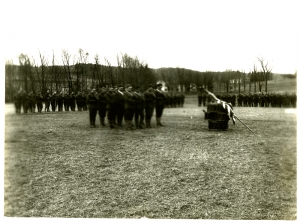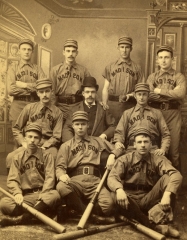had lived before migrating to the United States, was completed in 1928. The next year James Dalgety came as the first coach and golf professional. When new Huntington Gymnasium pool, the gift of James C. Colgate, was put in use, swimming was added as a sport in1926 under the coaching of J. Howard Starr of the Physical Education Department.
Dr. Cutten sought to foster winter sports, especially as an outlet for student energy. Hockey which had an intermittent existence since 1916, partly because winter weather sometimes failed to provide the necessary ice, returned in 1928 as a minor sport and in 1929 had become a permanent part of the program. Ten years later skiing gained recognized athletic status and won popularity under the sponsorship of David W. Trainer, of the Geology Department, a Dartmouth alumnus who as an undergraduate had been active in the Dartmouth Outing Club. In appreciation of his efforts the ski slope behind the Huntington Gymnasium was named Trainer Hill.
In addition to the required two years of freshman-sophomore physical education, Colgate in 1930 introduced an intramural program. Supervised by the Physical Education Department, it afforded all students opportunity for athletic competition on the basis of fraternities and other groups and elicited a wide response. Several sports, such as golf, tennis, handball, squash, and swimming were stressed as those which could be carried over into the post-college years.
Colgate’s football record of the ’20’s and ’30’s matched, and in some instances surpassed, that of the preceding decades. Students, alumni, faculty, trustees, and townspeople shared in giving the team enthusiastic support. There probably were no followers more eager than the President of the University and the President of the Trustees. Dr. Cutten, the former Yale center, who occasionally took a hand in coaching, could always be relied on for rousing speeches at student and alumni rallies; Mr. Colgate repeatedly stressed the ideals of good sportsmanship, as well as the “will to win” theme. The editor of the Alumni News, recognizing in 1927 that at Colgate and many other colleges there was undue emphasis on football, believed that instead of trying to “drive the customers away from the side-show” greater effort should be made to get them interested in the “main tent”-i.e. the intellectual life of the college. In developing the Colgate Plan the University was attempting to demonstrate the worth of this approach.






